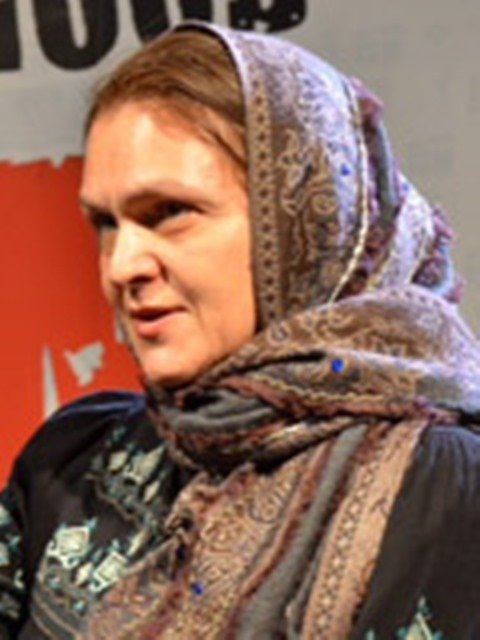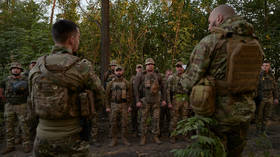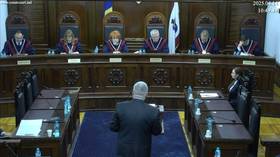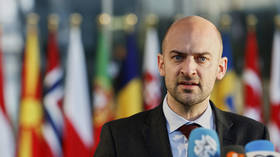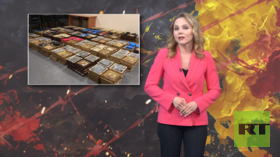Iraq and the US model for conquered territories
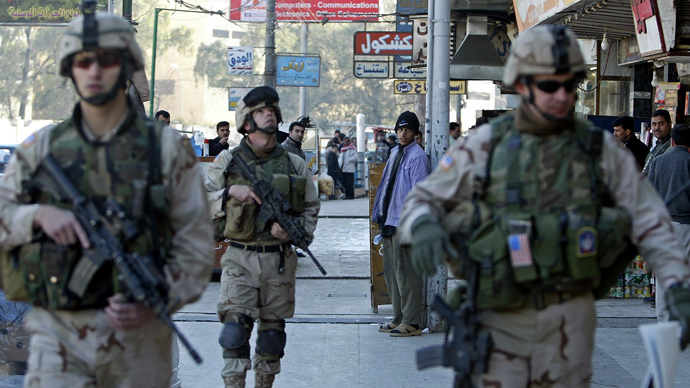
The road to Baghdad Airport is the best illustration of what the United States build as they conquer one country after another.
Going to an airport seems to be such a mundane thing. It looks about the same all over the world. Except in Baghdad you have to leave home five hours before the flight – and not because the airport is so far from the city.
You cannot take a taxi to the airport. Halfway through, the taxi driver will slow down and pull off the highway and into a fenced area. Here, you have to take your luggage, let the taxi go and slowly walk on the gravel for about 80 yards. This whole time, there will be a dozen well-trained eyes closely watching you.

Next, you have a choice: sit in an extremely hot bus for a few hours waiting for it to fill up or take a car. There are black cars and white cars, clean cars and cars that are not so clean. A black car will take you to the airport for $70. A white one costs $40. (Both amounts are unthinkable for locals.) Drivers wear black pants, white shirts and black ties. (Usually, no Iraqi dresses that way.) They all speak English. Personnel at the cash register even know how to write in English (whereas an ordinary well-educated Iraqi would have a hard time even trying to write a telephone number in what the rest of the world knows as Arabic numerals). There are no under-the-counter dealings, no gypsy cabs – only tabs and receipts. There is no traditional haggling, which usually drives Westerners crazy – but this is part of the Muslim ethic because by lowering the price the salesman earns special bonuses with the Almighty.
These cars and these drivers only go back and forth between this point and the airport. Still, this does not mean that security guards will not thoroughly search you and the car – and not just once or twice. Before you get to the plane, there will be nine searches like that – German shepherds, scanners, frisking, the whole shebang. The driver will have to open the hood, the trunk and all the doors.
Yet even this thoroughly inspected car with this thoroughly reliable driver will not take you to the entrance to the airport building. You will leave your suitcase ten yards before the door and go to the frisking area. Then you will be allowed to come back to your suitcase and take it to another scanner. Surprisingly, guards have never asked me about my laptop and lots of other devices in my suitcase.
I had been warned about every possible difficulty – except one thing: that the female guards frisking you at this frontier of American diplomacy are not like their colleagues in Iraq’s Security Service. They have learned to act like the heroines in Hollywood films about the difficult lives of lesbians.
Price of journalism
The road to Baghdad Airport is what every journalist has to go through. They should also read a memo about their colleagues killed in Iraq. As of today, the death toll stands at 370.
This is the road where, nine years ago, US soldiers opened fire on a car taking an Italian journalist, Giuliana Sgrena, to the airport after Italian officers rescued her from captivity. Americans claimed the car was going at a high speed and failed to stop at a roadblock. Sgrena says the car was going slow and nobody gave them a signal to stop. They just started shooting – aiming at the people inside, not the tires. Major General Nicola Calipari literally threw himself on Giuliana and was killed. She was wounded but survived.
Sgrena was kidnapped outside Baghdad University on her way from the university mosque used as a temporary shelter for refugees.

There are too many mysteries surrounding this story, which is very typical of US democracy-spreading campaigns. Sgrena was a Communist. She worked for the left-wing newspaper Il Manifesto and criticized US occupation. It made no sense for insurgents to kidnap her. The only people who had problems with her were Americans, not insurgents. As Sgrena testified, the occupation administration was not too pleased with Italian efforts to rescue her.
Thanks to Assange, we even have a video of Americans killing journalists in Iraq in cold blood.
One would think that, after that, the occupation regime would be more careful.
But no. US troops shot and killed Aseel al-Obeidi at close range. She was documenting a mop-up operation by US forces. The soldiers thought she was suspicious. “Once there is no man, there is no problem,” Stalin used to say. So they killed her together with her husband, also a journalist.
Americans say the circumstances of the shooting were “unclear.” Some Iraqis claim that journalists are so eager to get a good picture that they take unjustified risks. (Assange’s video proves that they are wrong.) But shooting women at point-blank range? This is a new thing brought in by the occupation authorities.
Scent of US occupation
The Iraqi Army has been learning security from Americans for 11 years. Yet a week before the April 30 election, Mohammed Bedaiwi al-Shammari, a Radio Free Iraq correspondent, was on his way to a government building, and the president’s guard shot him dead.
After that incident, all guards and patrolmen in Iraq were ordered to smile. And they do. Some of them are afraid of showing their faces and wear masks with the “dead man’s smile.” They smile as they come up to you and explain that if you take pictures of this wall and that wall, he and his companion will go to prison – and these armed people smile as they show you how their hands will be tied – kind of like captives or slaves on ancient reliefs.
Wherever the occupation forces used to be, the “scent” of America’s unorthodox concepts regarding order and security remains. Of course, these concepts were somewhat watered down due to Iraqi traditional cordiality, carelessness and fickleness but it will certainly stay here a long time.
Most of the few passengers at the airport are US-trained military. They have shaved heads, they chew gum (which nobody does in Iraq), laugh loudly and walk with a swing.
Everything is bad and nothing is good in this country after 11 years of building the “American democracy”. If you talk to Iraqis long enough, they all say that the US invasion and the strange order they established is the only cause of their problems.
There are Iraqis, who served the USA, worked with them and learnt to talk and walk like Rambo. There are Iraqis who lament the fact the Americans left and are grateful to them for bringing down Saddam.
But there is not a single person in Iraq who would say that the US invasion was a positive factor in Iraq’s history.
It’s not about the fact that the US invasion led to unprecedented number of casualties, hardly ever mentioned in the world media, which are from time to time arguing about the numbers.
The most shocking information was totally deleted. Only a few crimes were mentioned in the media. For example:
- Bombing of a wedding;
- Investigation of tortures in Abu Ghraib;
- Soldiers killing 24 people in the town of Haditha in Anbar province.
Finally, the key point in describing the US occupation of Iraq is the long story of Julian Assange trying to publish the video of the American pilots’ conversation as they are shooting Reuters journalists. Assange sent this video to all the leading world media outlets, but none of them published it.
Today Assange is in hiding facing the threat of extradition to Sweden.
Ruins guaranteed
It’s not about the fact that in Iraq which is the ancestral homeland of our civilization, everything is destroyed and nothing at all is produced – absolutely nothing: no wheat, no building materials, no consumer goods, no books, no ideas. This is the report on the deplorable results of the American “restoration” in Iraq made by American officials.
It’s about the fact that America which is constantly concerned about the lack of freedom and democracy in various places of the world can guarantee only ruins to this world, where they will build a prison with the strict access control system and will explain to the locals why their prison is better.

Of course, now that the Americans are gone it’s easier to breathe in Iraq. During the American occupation people were not allowed to go out after 6. During its hottest phase a thousand people were killed every day. Today, after the withdrawal of American troops, the prison regime is less strict and the number of casualties reduced to “just” a thousand per month.
But it doesn’t change the essence of the US model for conquered territories – check points, numerous military and special service units, concrete blocks disfiguring the city, endless searches and examinations, unemployment, poverty, war between each and everyone. People conceal from each other where they live and work. Organizations and media outlets, unable to build walls around themselves, conceal their locations.
In Iraq you begin to see many things differently to a large degree due to the traces of the American presence. For example, in the Baghdad museum there’s a world-known monument of a powerful lion which is about to kill a weak man. This monument was created by some Mesopotanian genius over two thousand years ago as a scary symbol of the relationship between man and state. The US model is similar to that lion, but this is not an animal which can be killed by a brave man, but an army of robots with numerous protection systems and remote control. Can you really oppose them, defeat them and take to court for war crimes?
The statements, views and opinions expressed in this column are solely those of the author and do not necessarily represent those of RT.
The statements, views and opinions expressed in this column are solely those of the author and do not necessarily represent those of RT.
